A Look Inside UBS's Quantitative Evidence & Data Science Team
Led by Bryan Cross (pictured), the asset manager's QED team aims to blend quant and fundamental to find unique solutions to new problems.
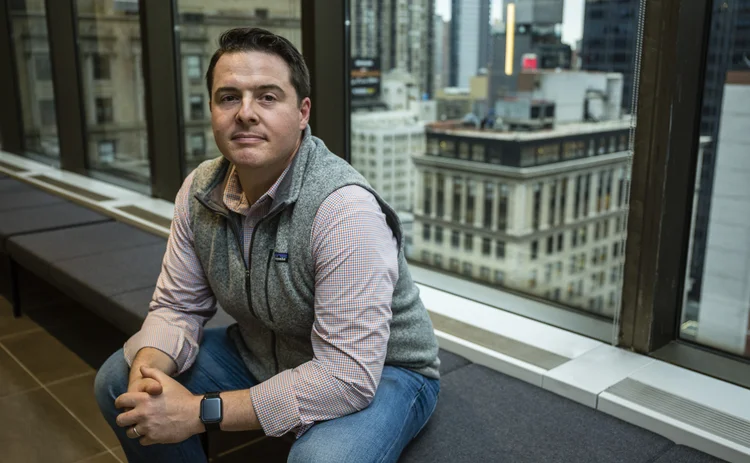
Need to know
UBS Asset Management’s QED team is technically only 19 months old, but the seeds for this unit date back many more years inside the institution. Bryan Cross and Barry Gill explain the thinking behind the group, where it’s been successful, and where there’s room for growth. By Anthony Malakian with photos by Timothy Fadek
Bryan Cross grew up about an hour northwest of Chicago in the suburban town of Barrington, Illinois. His father would sometimes bring home six copies of that day’s New York Times crossword puzzle—one each for Bryan, his mom, dad, and three siblings: Will, Molly, and Anne—and it would be a race to see who could finish the fastest.
To this day, Cross still has a love for crosswords, but the experience also helped to inform his thinking for what would become UBS Asset Management’s Quantitative Evidence and Data Science (QED) unit. When it comes to QED staff, Cross believes in the concept of a liberal arts engineer: someone with intellectual flexibility—someone who is curious and competitive, but who can also work within the constructs of a team.
“Really good engineers like to deconstruct problems, and they’re able to recognize threads in that deconstruction that are similar to problems they’ve seen before elsewhere. They can then convert those deconstructed problems into business solutions that leverage that cross-domain expertise,” he says. “Much in the same way that you do a crossword, you say, ‘Oh, I’ve seen that pun before,’ or, ‘I’ve seen that type of clue before,’ or you’ve seen something related to it. You can then quickly pull that and search your database and find the solution for it.”
It was a startup within the organization. Nothing like this had ever been done. There was no blueprint.
Bryan Cross, UBS Asset Management
QED is UBS Asset Management’s foray into incorporating quant and data science principles into the traditional fundamental investment process. The internal group is a cross-asset effort that works alongside analysts, traders and portfolio managers across asset management and UBS O’Connor, the bank’s multi-strategy hedge fund. It uses artificial intelligence (AI)—from machine learning to deep learning, with a heavy emphasis on natural-language processing—to solve bespoke problems, and sources alternative datasets to drive excess returns for investors.
Since the group’s official formation in March 2018, there have been some rough patches, but QED is now starting to find its form. Users of QED come to the group for help—bespoke projects range from dashboards to web apps to email alerts, to more proactive and ambitious projects that help to analyze, say, the iBuyer market, or using disease modeling to decipher fads and trends in the fitness industry.
The aim is to be creative, curious and have some intellectual flexibility in order to create unique solutions to complex problems. But as with any new creation, there have been lessons learned along the way.
Infection Rates
After earning an economics degree from the University of Chicago in 2003, Cross enrolled in a partner program between UBS and his alma mater that would allow him to attain a master’s degree in financial mathematics while gaining real-world experience on the investment bank’s quantitative trading desk, which, at the time, was called program trading. His remit included principal and agency-portfolio trading, as well as ETF market making, automated ETF market-making, and a small statistical arbitrage book.
It was, as Cross puts it, a trial by fire into the quant domain. It forced him to think in terms of factors—such as valuation, growth, quality and momentum—at a portfolio level and quantitative risk management. They built innovative tools such as trade optimizers and what ended up being the early stages of what is now UBS’s central risk book at the investment bank. Those early experiences at the bank helped to inform the early elements of QED.
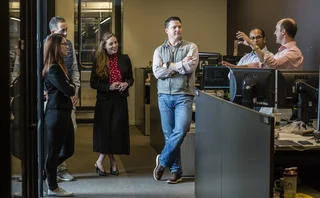
Today, when you listen to Cross talk about QED, it sounds like he’s describing a fintech startup that’s ready to launch a Series A round of funding, rather than something that’s been nurtured inside one of the largest asset managers in the world. He calls his colleagues inside of Asset Management, “clients.” He uses a derivative of the now-common SaaS-tech delivery model: quant-and-data-science-as-a-service. There’s an earnestness in his voice similar to that of a startup CEO. He talks about the need to grow adoption among users. He knows that mistakes have been made—lessons are always meant to be learned when creating something completely new. He can see the problems that analysts and portfolio managers face, he knows QED can help, and he knows they have to walk before they can run.
“It was a startup within the organization. Nothing like this had ever been done. There was no blueprint,” he says. “The compliance aspect wasn’t set up. The vendor management wasn’t set up. Even the basics of, ‘OK, what do we do now?’ weren’t set up. So it was really exciting to put pen to paper and come up with the strategy for how we would attack this problem: how we think about driving adoption, our ultimate goals, and what are our key performance indicators.”
One example of how QED works revolves around the iBuyer market, a new term used to describe online real estate companies such as Zillow, which started as an online advertising platform but has morphed into an online marketplace for buying and selling homes. For the QED team, the big investment question was whether companies like Zillow—and others entering the market—would be able to ramp up this business as fast as they said they could. How is an individual company doing? Can that be measured relative to their plan? Relative to others in the market?
QED proactively sourced an alternative dataset from a vendor, combined that with an S-curve model—a statistical model for the adoption rate of innovations—to provide internal users with a probability estimate as to whether or not the company would hit its long-term guidance, which can be used as a measure of long-term fundamental health. (Not all alternative datasets are so informative, but more on that later.)
Another use case was for the fitness industry. An analyst had asked the QED team about a particular company in the space, which inspired them to think about fads and trends, which in turn led them to think about how disease modeling could potentially be used as an analysis tool. As Cross puts it, there is a period of time where you “convert” susceptible people (this is your technology acceptance model, or TAM) into infected people (the actual users of the technology). Many of those infected people then recover (this is your churn).
QED applied that to an unnamed fitness company where they could look back at other historical fitness trends and use data—from both public and private sources—from those trends to model the “infection” rate that occurred in the historical base classes, and then apply that to the current model to come up with a forecast for user growth for that particular current model.
“I’ve never read a sell-side report that looks at disease models as a proxy for fads,” Cross says. “I think that as a general observation about QED—and this goes back to the idea of liberal arts engineering—we’re really good at recognizing analogous situations across domains. That’s the value-add that we bring. We’re students of everything; we’re intellectually curious about everything. Someone from the team can read an article about modeling the spread of bird flu using a set of differential equations, and then she can realize that’s directly analogous to fitness trends, or adoption rates of streaming providers. From there, we can build something that works, is explainable, is sophisticated, and is better than guessing.”
Cross says sometimes users come to them with challenges, and sometimes they think of something and push it out to users. The key is using quant and data science principles to find innovative solutions. But sometimes, the process can be challenging.
If at First You Don’t Succeed
Barry Gill describes himself as such: “I am Irish. This is my 25th year at UBS. And I’m a dyed-in-the-wool stocks and markets guy.”
Today, Gill is the head of Active Equities at UBS Asset Management. [Editor’s note: Gill was promoted to head of investments on Nov. 1.] There has traditionally been a line drawn between fundamental investing and quantitative investing, but as passive investing has cut into active’s inflows and returns, there has been a merging of the two—which gave birth to the portmanteau “quantamental.”
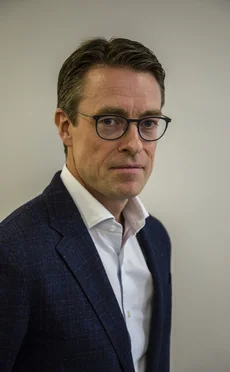
To delineate between active and passive, in early 2015, UBS bucketed the fundamentally oriented managers into the active group, where they manage about $80 billion of external client assets. Gill acknowledges that the delineation may have happened for his benefit, because while he had the fundamental side of investing nailed down, the passive world was a bit outside of his grasp. Since 2015, though, this delineation has become a common framework across Wall Street.
In 2010, Gill hired Cross, who was then working on the investment bank’s quant trading team, to join the bank’s prop desk, which would later become O’Connor due to the Volcker Rule. As Gill recalls, quants were effectively eating part of the fundamental team’s excess returns and he wanted to figure out how to bring that quant piece into their investment process.
“The primary reason I hired Bryan was because my hiring policy over time has always been to offset weaknesses that I have, or find gaps in our opportunity set, and plug those gaps,” Gill says. “That makes for a much stronger team. So I hired Bryan as the guy with the quantitative horsepower.”
For Cross, the move made sense because he “had no idea how to pick stocks,” as he puts it. “The deal I made with Barry [who was running the investment bank’s prop desk at the time] was that I’d teach him everything he’d want to know about quant, and he would teach me how to pick stocks.”
In many ways, the seeds for QED were planted, but germination took some time.
Gill says that this initial merging of quant and fundamental did not work as he’d hoped.
“It didn’t work for two reasons. On one hand, I think Bryan was more keen, at that time, on learning the fundamental skillset and arming himself that way, and I needed new ideas so I let that happen; so we were never able to embed the quant perspective,” Gill says.
There was a concerted effort to map Gill’s framework for investing into various screens and tools to help the group to identify stocks more effectively, but he says it was like speaking into a translation device—the words would come out, but the sentences didn’t always make any sense.
“I—even though I knew this was important—could not adapt my workflow,” Gill admits. “I’ve always run deeply fundamental, deeply researched, highly concentrated portfolios, and while I wanted the skillset, and recognized its importance, and recognized it could improve our risk-adjusted return, I couldn’t execute on it.”
By the time 2015 rolled around, and Gill was asked to run Active Equities, he decided to try again.
“So I failed once at this in that regard,” he says. “When I came over and was asked to run Active Equities, I did the same thing—I thought, ‘Hey, I need somebody who has quant skillsets,’ and I needed an organizational insider because I was coming from the hedge fund unit to run a long-only business. The guy who became my deputy, Ian McIntosh, was already heavily quantitative in nature because I wanted to keep this alive.”
Active Equities has three multi-year strategic objectives, Gill says. One of them is to increase both the quality and quantity of the excess returns that the group generates for clients. The second is to add value to clients above and beyond returns. The third is to reengineer the research process so that it would enable the first point.
“QED is the beachhead in the reengineering of research process,” Gill says.
Taking Off
In late 2016, Dawn Fitzpatrick, who was then the head of UBS Asset Management’s global equities division and O’Connor, hired Cross to run systematic research for the asset manager. While at O’Connor, Cross worked with Fitzpatrick to develop a quantitative project called Behavioral Analytics, which was used to measure some of the behavioral biases embedded within the hedge fund’s portfolio managers.
When Cross moved to UBS Asset Management, it was part of a reorganization of efforts where the systematic research and quantitative portfolio management teams moved from being an independent vertical within Asset Management’s investment platform, to being part of the passive team to, in part, help bolster smart beta strategies. Cross says after the reorganization, the mandate for the systematic research team went from being the alpha manufacturer for the quantitative equity portfolio strategies, to also having responsibility for building up the proprietary smart beta business, as well as building “the future of quant,” which was meant to drive quant into the rest of the firm.
After Fitzpatrick left UBS to become CIO of Soros Fund Management in 2017, Suni Harford, who had spent the previous 24 years at Citigroup, came in and, as Cross recalls, she realized the need for a centralized quant and data science capability that would be available to all of UBS Asset Management’s investment professionals, and not just the quant team.
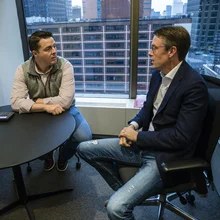
Cross and Gill had been having regular conversations about doing something like this, and they put together a pitch. After that, it didn’t take much to greenlight the project. QED was officially launched in March 2018 with a team of four people.
“It was such a large opportunity—and still is—in the marketplace,” Cross says. “When you think about the assets in the traditional fundamental active sleeve, this is a very, very large pie and there’s very little quant and data science in that pie, so the opportunity is huge.”
While QED is a cross-asset endeavor—and not just the domain of Active Equities—Gill says the point of QED is to do what quant and data are super powerful at: driving efficiency and scaling into anything.
“The future of active equity investing is delivering large amounts of idiosyncratic excess return—or alpha, however you want to call it—to our clients. The way to do that is by concentrating your portfolio more. When you concentrate more, you’re taking more single-stock risk, and portfolio construction matters more. Since you’re taking more single-stock risk, you need to underwrite each of those ideas in a much more scientific manner than you’ve been doing in the past. You need to understand the interactions between those securities. The challenge is that you still need to find the great idea,” Gill says. “So QED will help us to drive efficiency into the looking-under-rocks process, and then it will help us to drive accuracy and drive up the confidence interval when we actually make the investments.”
Imitation Game
As a Christmas gift, Cross’ wife, Samantha—“We met at UBS; she was in the graduate trainee program a year behind me. I made her do math problems as part of training, so she didn’t really like me at that point in our lives.”—got two tickets to the 20th Annual Crossword Puzzle Contest in Westport, Connecticut, which is run by Will Shortz, the famed crossword puzzle creator and editor for the New York Times.
Bryan did very well on the first two puzzles—the way the tournament works is you finish an unpublished Monday puzzle, then a Tuesday, then a Wednesday, and so on, advancing in difficulty, with the fastest three times moving on to the finals—but he was tripped up on a question he felt he should have had: “Help for a star witness? Telescope,” he recalls, ruefully.
Sometimes, the information just doesn’t make sense in the moment. This is true with crossword puzzles, and it’s also true with alternative data—as many individuals are learning across the world of finance.
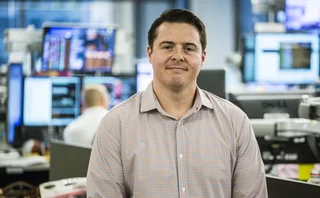
Cross says one of the biggest mistakes made early on was experimenting with alternative datasets that more or less sucked up time, energy and expenses. They would spend a lot of time testing datasets. If your standards are high—as they should be—the probability of finding something that’s robust is low; you want to find the “special stuff” but so, too, does everyone else purchasing these datasets. And when they did find something that they thought would truly be a value-add, they would struggle to convert that into user engagement.
“We assumed this burgeoning alt data world was going to be a gold mine of potential alpha opportunity,” he says. “If we were able to create golden alpha opportunities from that mine, then that was going to convert into user engagement, which is what we wanted to do—we needed to be able to drive traditional investors to use quant and data science as part of their investment process. We found both of those assumptions to not be true.”
As Gill notes, QED was set up, in part, to find alpha-generating signals available to UBS AM that it was not currently ingesting. When it comes to markets and stock picking, he says, the beauty of crisis is that you’re always looking at the signals that come out of interactions—or the lack of signals—and trying to figure out what’s happening, but you don’t want to suppress that market. This creates unique challenges, in and of itself.
“What we learned is that data is very expensive, that alt data was likely in a little bit of bubble, and that where the data was highly accurate was a very narrow part of the overall investment landscape—i.e., consumer discretionary in the US,” Gill says. “Just getting the data for people, and telling them there was alpha there, wasn’t proving a really winning strategy in changing behavior.”
Which brings up another—and more important—challenge for QED: Just because you build it, it doesn’t mean they will necessarily come. From four full-time staffers, QED has expanded—Cross declined to give an exact headcount, but he says the New York team has grown, they’ve recently added resources in Singapore, and by the end of this year they will add resources in Europe, too, which will get QED closer in alignment with the footprint of assets for UBS Asset Management.
But the key for the unit will be growing internal user engagement, now that it’s finding its footing. Gill says that once QED starts finding patterns in the data, they will bring it in, put their own user interface on top, make it accessible to the masses, and then “market the heck” out of it internally.
“It’s…Slow. Hard. Work. I wanted to do this, and I couldn’t change,” Gill says. “There are a lot of people who don’t want to do this, so how are they going to respond? What we’re trying to do is be available as much as possible. Sometimes we need to solve bespoke problems for them. And we need to build this body of work up through engagement with them. … I think there will be a point where the penny drops, or there will be a winning hit, or maybe it will just be an accumulation of minor interactions that eventually changes the behavior.”
Cross puts it slightly differently. The Bass model, developed by Frank Bass, an academic in the field of marketing research and science, follows an S-curve and is a way to describe “permanent” technologies—think phones, microwave ovens, computers—and how a particular technology spreads into the mainstream.
If you decompose that model into the parameters that drive how fast those adoption rates happen, Cross says, it decomposes into two things. The first is the coefficient of innovation, akin to asking how “cool” is the thing you’re doing? The second one is the coefficient of imitation, which is: Is your neighbor using it? What’s the word on the street? What’s the value-add?
“I think so far we’ve focused on the coefficient of innovation, and building new products and new techniques. I think going forward, we’re really going to have to focus on that coefficient of imitation,” Cross says. “This is understanding who our internal clients are, who are the early adopters, who do they physically sit next to, and then develop targeted strategies to drive adoption to those folks. I think the future of QED will go down that pipe. I wouldn’t be surprised if in a couple of years we have analysts that are doing the full investment funnel, from the idea discovery phase to the idea recommendation phase.”
Further reading
Only users who have a paid subscription or are part of a corporate subscription are able to print or copy content.
To access these options, along with all other subscription benefits, please contact info@waterstechnology.com or view our subscription options here: https://subscriptions.waterstechnology.com/subscribe
You are currently unable to print this content. Please contact info@waterstechnology.com to find out more.
You are currently unable to copy this content. Please contact info@waterstechnology.com to find out more.
Copyright Infopro Digital Limited. All rights reserved.
As outlined in our terms and conditions, https://www.infopro-digital.com/terms-and-conditions/subscriptions/ (point 2.4), printing is limited to a single copy.
If you would like to purchase additional rights please email info@waterstechnology.com
Copyright Infopro Digital Limited. All rights reserved.
You may share this content using our article tools. As outlined in our terms and conditions, https://www.infopro-digital.com/terms-and-conditions/subscriptions/ (clause 2.4), an Authorised User may only make one copy of the materials for their own personal use. You must also comply with the restrictions in clause 2.5.
If you would like to purchase additional rights please email info@waterstechnology.com
More on Emerging Technologies
AI & data enablement: A looming reality or pipe dream?
Waters Wrap: The promise of AI and agents is massive, and real-world success stories are trickling out. But Anthony notes that firms still need to be hyper-focused on getting the data foundation correct before adding layers.
Waters Wavelength Ep. 343: Broadridge’s Jason Birmingham
This week, Jason Birmingham of Broadridge talks with Tony about the importance of fundamentals as technology rapidly evolves.
Data standardization is the ‘trust accelerator’ for broader AI adoption
In this guest column, data product managers at Fitch Solutions explain AI’s impact on credit and investment risk management.
BNY inks AI deal with Google, Broadridge moves proxy voting to AWS, Expero delivers ICE market data, and more
The Waters Cooler: TSX Venture Exchange data hits the blockchain, SmartTrade acquires Kace, and garage doors link to cloud costs in this week’s news roundup.
Everyone wants to tokenize the assets. What about the data?
The IMD Wrap: With exchanges moving market data on-chain, Wei-Shen believes there’s a need to standardize licensing agreements.
Google, CME say they’ve proved cloud can support HFT—now what?
After demonstrating in September that ultra-low-latency trading can be facilitated in the cloud, the exchange and tech giant are hoping to see barriers to entry come down.
Waters Wavelength Ep. 342: LexisNexis Risk Solutions’ Sophie Lagouanelle
This week, Sophie Lagouanelle, chief product officer for financial crime compliance at LNRS, joins the podcast to discuss trends in the space moving into 2026.
Citadel Securities, BlackRock, Nasdaq mull tokenized equities’ impact on regulations
An SEC panel of broker-dealers, market-makers and crypto specialists debated the ramifications of a future with tokenized equities.







